Social media’s role in market research has transformed from an optional channel to a strategic necessity. With social media advertising spend projected to reach $276.7 billion in 2025—up significantly from $219.8 billion in 2024 and growing at 9.37% annually—brands need sophisticated research approaches to ensure these investments deliver maximum returns.
What makes social intelligence so valuable is its ability to capture authentic conversations happening in real time. Rather than relying on controlled survey environments, today’s most effective researchers tap directly into the digital spaces where consumers naturally share opinions, preferences, and behaviors across communities and platforms.
In this article, you’ll discover:
- How to structure research strategies that deliver actionable insights
- Practical frameworks for transforming social data into strategic intelligence
- Advanced methodologies that reveal meaningful patterns beyond basic metrics
- Step-by-step approaches for implementing findings to drive business results
- Tools that streamline the research process for organizations of any size
Whether you’re refining your existing approach or just beginning to tap into social media’s research potential, this guide provides the roadmap to convert digital conversations into tangible business opportunities.
Key takeaways
-
Social media research is now essential, with 80% of marketers considering it critical for competitive analysis and ad spend reaching $276.7 billion in 2025
-
Major advantages over traditional methods: Cost-effective, real-time insights, access to diverse audiences, and unfiltered customer feedback for product development
-
Core research methods include social listening, sentiment analysis, content performance tracking, and competitor benchmarking to turn conversations into strategic insights
-
AI and emerging technologies are transforming the field with predictive analytics, voice/visual search monitoring, and automated pattern recognition
-
Implementation requires structure: Set clear objectives, choose the right platforms, organize data collection, and measure ROI to ensure research drives actual business results
Understanding social media market research
Social media market research involves gathering historical and real-time data from social media platforms related to a brand, product, or industry. It blends data analysis, consumer psychology, and digital marketing strategy for a deeper understanding of audience behavior, brand perception, and market trends.
Unlike traditional research methods like surveys or focus groups, social media research captures real-time, unfiltered conversations and behavior. It allows brands to observe what people are saying and doing, without prompting, across the platforms they already use.
This shift has changed how marketing used to work. From a periodic, static process into a continuous and dynamic one, marketing now relies on real-time insights to stay relevant, responsive, and audience-led. Strategies are no longer set in stone—they evolve based on what people say, share, and engage with across platforms.
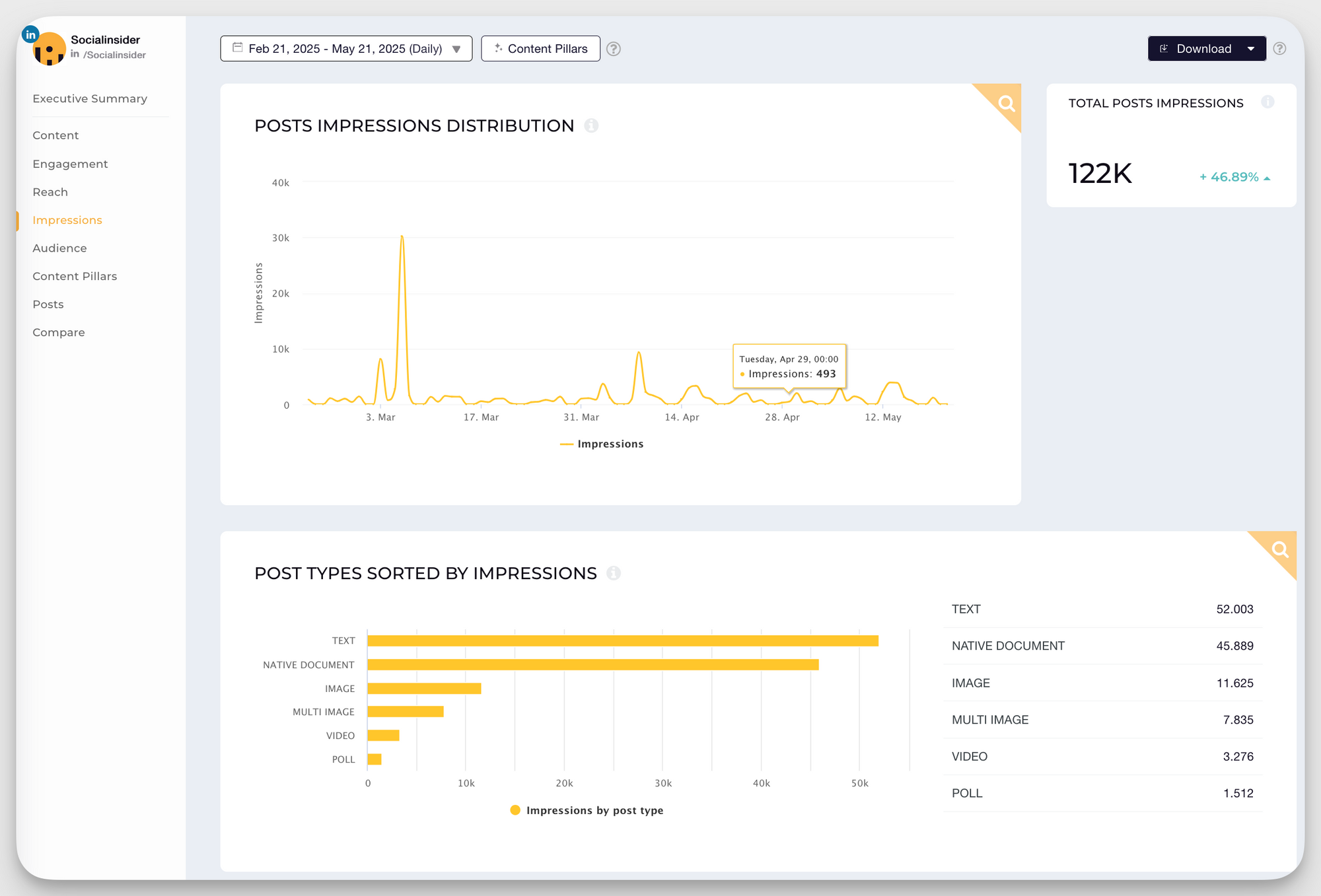
Use data to guide your social media content strategy
See what topics, formats, and channels your audience engages with the most and use these insights to boost awareness and conversions.
Start a 14-day FREE trialThe benefits of social media market research
Nearly 80% of marketers consider social media insights critical for competitive analysis. However, this is not the only benefit of social media market research. Here are some more benefits of market research for social media:
Cost-effective compared to traditional methods
Running surveys, panels, or interviews can be time-consuming and expensive. Social media market research offers a budget-friendly alternative. Brands can tap into existing data (like comments, tags, mentions, and engagement patterns) to monitor feedback without hiring third-party firms or building custom focus groups.
For example, analyzing comments under brand posts or competitor campaigns can reveal recurring product complaints, feature requests, or content themes that resonate.
Spotify did this effectively before launching Spotify Wrapped. By analyzing organic conversations and social sharing behavior, they found users loved reflecting on and showcasing their listening habits. This insight helped them design a campaign rooted in personalization and social sharing, without relying heavily on traditional ad spend.
Real-time insights and feedback
Social media platforms provide immediate access to public sentiments. Instead of waiting weeks for results, marketers can track how audiences respond to campaigns, product launches, or brand news in real time. This agility enables quicker decision-making and smarter responses during both successes and crises.
Access to broader and more diverse audiences
One of the biggest advantages of using social media for conducting market research is the sheer diversity of voices. From Gen Z on TikTok to industry professionals on LinkedIn, social media influencers and everyday users alike contribute valuable insights across demographics, geographies, and interests.
Competitor analysis opportunities
Social media market research is also a powerful tool for competitor analysis, helping you pinpoint areas where they are underperforming or neglecting certain platforms, content types, or audience segments. For example, if a competitor is strong on Instagram but absent on TikTok, you can target that untapped audience. Identifying content gaps—such as missing educational videos, customer testimonials, or interactive posts—allows you to fill those voids and stand out in the market.
This is one area where social media analytics tools such as Socialinsider shine. By bringing posts from all platforms into one single dashboard, you can compare the type of content posted most frequently vs. the type of content that actually brings results, and adjust your strategy accordingly. Here’s an example from Emirates that reveals that even though they post more videos on Safety & Security Updates, the content that brings the most engagement is actually Behind-the-Scenes videos.
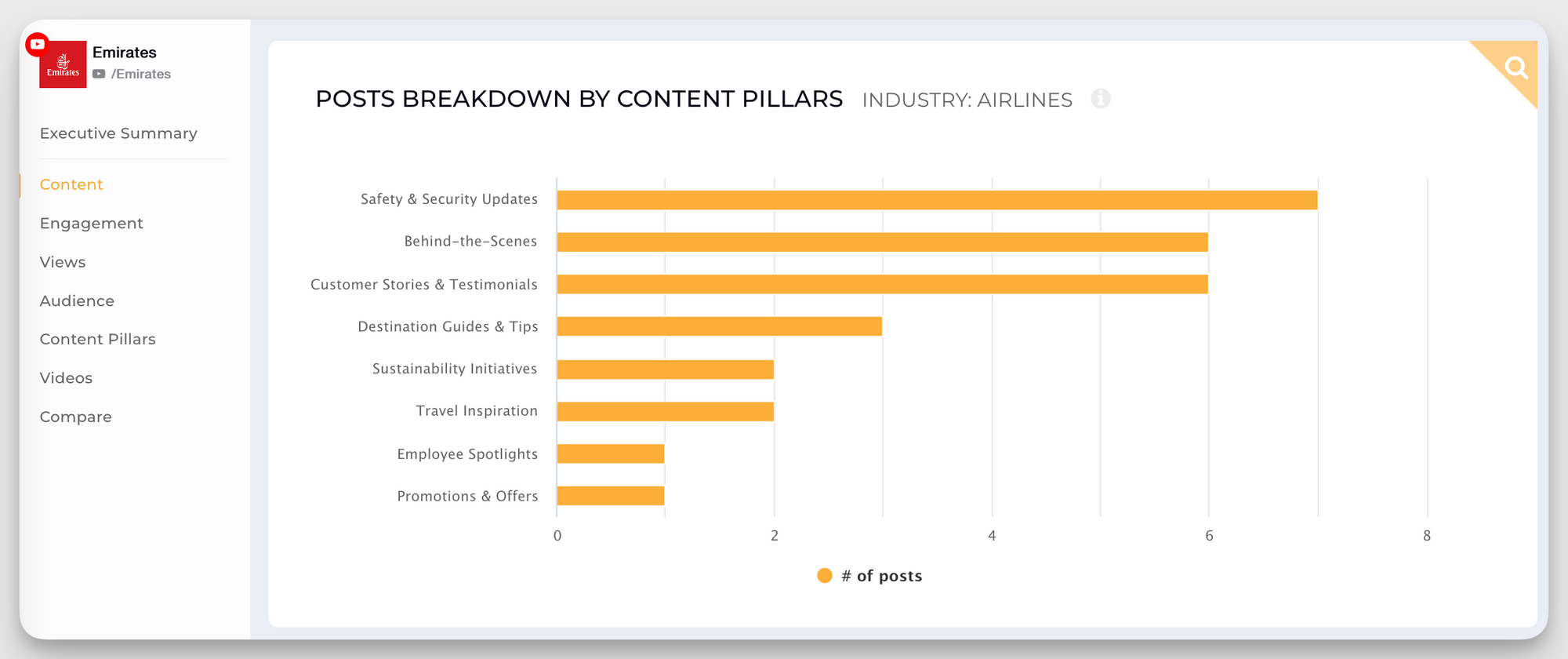
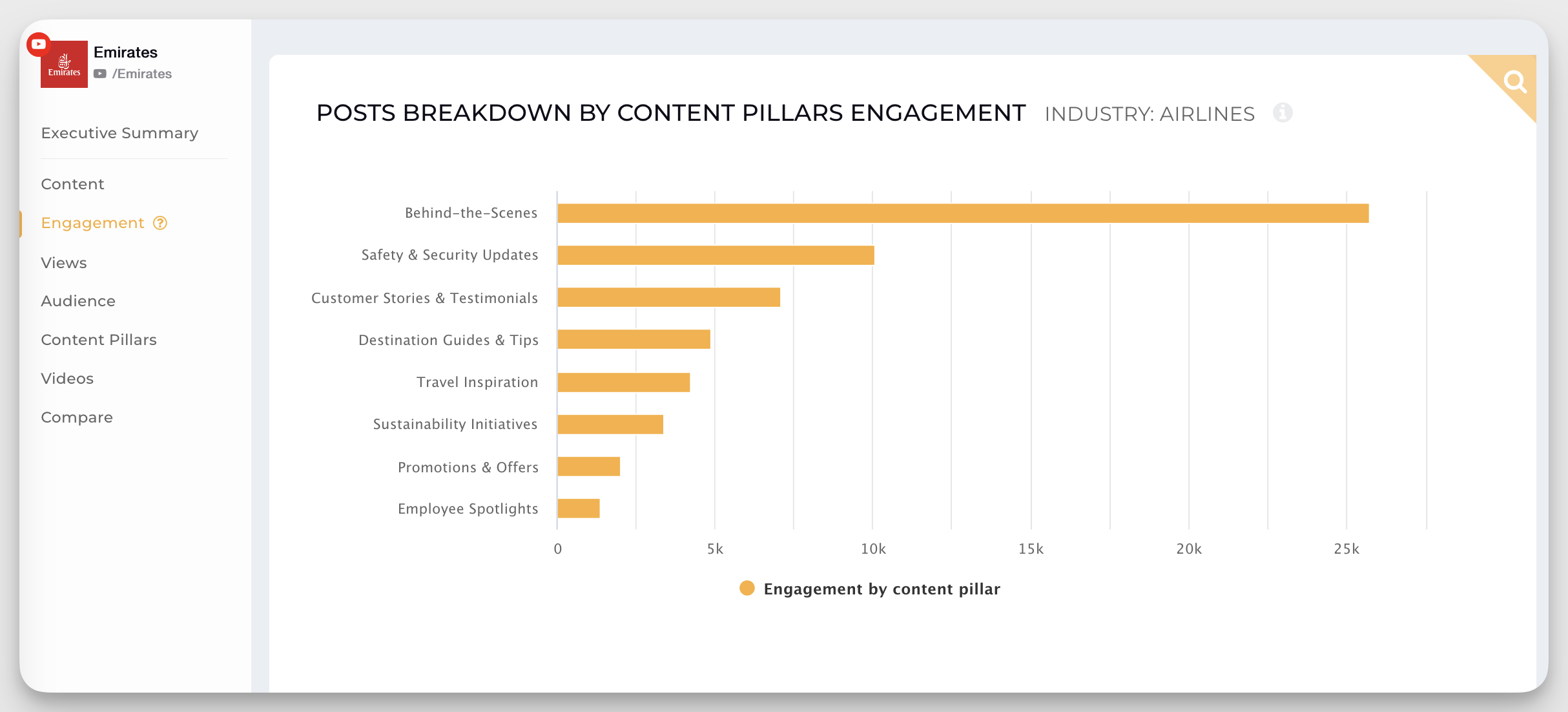
Moreover, performing a competitor analysis enables you to benchmark your performance, using metrics like engagement rates, follower growth, and content reach to assess where you excel and where you lag behind. This benchmarking helps set realistic, data-driven goals and track progress over time.
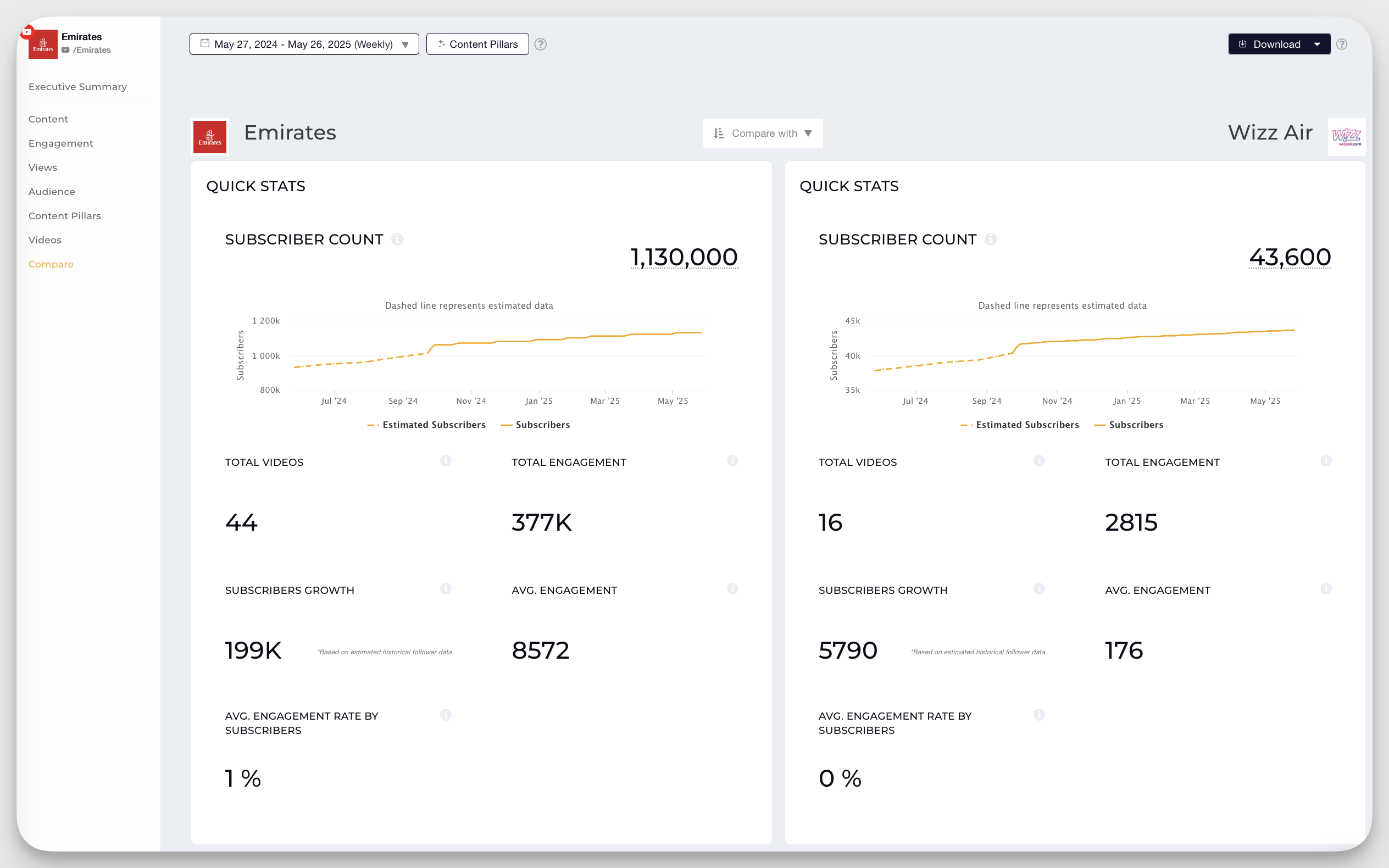
Enhanced customer profiling
Social media data goes beyond demographics to uncover user interests, sentiment, and behavior. Then, you can use these insights to build detailed buyer personas, shaped not just by who your audience is, but also by how they think and what they engage with.
For instance, you might typically post in the mornings. But Socialinsider can actually identify when your audience is most active, so you can adjust your publishing schedule to boost engagement. Another example, you may notice that posts with customer testimonials on a text banner underperform, while user-generated videos and Stories receive significantly higher shares and saves. These insights guide you to make smarter, data-backed content and timing decisions.
Improved product development
Social media research gives product teams direct access to real-time, unfiltered feedback. Tracking comments, DMs, and influencer content helps validate product ideas, identify common feature requests, and surface recurring pain points.
When creators or customers repeatedly mention that a product feels bulky or lacks a key integration, it signals a clear opportunity for improvement. These insights help prioritize what to build next, making product planning faster, more relevant, and grounded in real user needs.
Social media research doesn’t just inform—it empowers marketers, product teams, and strategists with continuous, people-first insight that’s both scalable and cost-efficient.
Core frameworks for social media marketing research
Structured frameworks help turn raw social data into clear, actionable insights. Here are a few proven models that make your research more focused and effective.
The 4 C’s of social media marketing: content, conversation, community, connection
This framework is foundational when analyzing brand presence and audience response:
- Content: Evaluate what types of content perform well across platforms. Use this insight to guide your own strategy.
- Conversation: Monitor comments, replies, and tags to understand what people are saying about your brand or competitors.
- Community: Identify shared values and behavior patterns among your audience clusters.
- Connection: Track how people engage with your brand over time and how influencer relationships shape perception.
This approach is often used in social media market research examples to uncover trends in tone, engagement, and sentiment that can’t be captured in surveys alone.
The 5 P’s of social media marketing: people, plan, platform, publish, promote
This framework guides the full content lifecycle and helps align your research goals with business outcomes:
- People: Understand who you’re speaking to using demographic and psychographic data from social platforms.
- Plan: Set research objectives—what are you trying to learn from the data?
- Platform: Choose the right channels based on your target audience and where relevant conversations happen.
- Publish: Track how content performs and what feedback it generates.
- Promote: Measure paid efforts and influencer campaigns for their impact on reach and engagement.
Using this model, teams can better organize their social media market research workflow, making it more intentional and repeatable.
The 50/30/20 rule (educate, inspire, sell)
This rule is a content planning guideline that also works well for market analysis:
- 50% educational content (industry insights, how-tos)
- 30% inspiring or emotional content (stories, community wins)
- 20% promotional content (product, offers, features)
Example: A skincare brand audits competitors and finds that most of their content is 70% promotional and only 10% educational. By adjusting their mix to focus on skin tips and customer stories, they see better engagement and stronger sentiment compared to their competitors, highlighting how social media market research can drive content strategy.
How these frameworks enhance market research efforts
Each model brings clarity to the research process. They help teams:
- Structure how they collect and interpret data
- Identify gaps in messaging or platform strategy
- Benchmark against competitors and industry norms
- Extract deeper insights from influencer campaigns and user feedback
Ultimately, what is the benefit of using social media for conducting market research with these frameworks? It gives structure to the chaos, turning noise into insight and insight into action.
Methodologies and techniques
Exploring market research on social media is not just about gathering data—it’s about choosing the right techniques to extract insights that matter. The methods below are commonly used to understand audiences, track trends, and inform strategy.
Social listening and monitoring
Social listening tracks brand mentions, industry keywords, and competitor conversations across platforms. It helps uncover trends, customer pain points, and emerging opportunities. This technique offers real-time context into what people are saying—and why—making it a core part of social media market research.
Going back to the Spotify Wrapped example, the campaign was born from social listening insights—Spotify noticed users were already sharing their listening habits online. That behavior inspired them to create a personalized, shareable experience, which led to over 60 million shares in 2023 alone. It’s a perfect case of turning passive listening into a viral, high-impact campaign.
Sentiment analysis
This involves evaluating the emotional tone behind social media posts, comments, or reviews. Sentiment analysis helps brands understand public perception—whether users feel positively, negatively, or neutrally about a product, campaign, or competitor. It’s one of the clearest ways social media market research guides messaging and reputation management.
Here’s an example from Chick-fil-A: In 2016, they replaced their popular Original BBQ sauce with a new Smokehouse BBQ variety. However, their customers didn’t like it and requested that the original recipe be brought back.
Between July and October 2016, the restaurant chain experienced a 923% rise in weekly mentions of “BBQ sauce”, while the hashtag #BringBackTheBBQ gained traction, which, ultimately, prompted the company to give their customers what they wanted.
Social media polls and surveys
Quick, interactive polls on Instagram, LinkedIn, or X (formerly Twitter) allow brands to gather user opinions fast. While more informal than traditional surveys, they offer high response rates and qualitative context, especially useful during product development or campaign planning.
Social media focus groups
Private groups or moderated communities on platforms like Facebook, Discord, or Reddit act as virtual focus groups. These spaces allow brands to test concepts, gather feedback, and observe how niche segments engage with content or ideas. It’s a more agile, cost-effective alternative to traditional focus groups.
Content analysis
Analyzing what types of posts resonate—images, reels, carousels, long-form vs short-form—reveals patterns in engagement. This technique helps refine your content strategy based on what actually performs, not just assumptions. It also supports benchmarking during market research using social media.
At Socialinsider, we use content pillar tagging to evaluate what drives results across platforms. As you can see, Funny / Memes posts lead engagement on both Instagram and LinkedIn, but they get considerably more engagement on LinkedIn. These insights shape our publishing strategy, helping us prioritize high-impact formats that align with our audience.
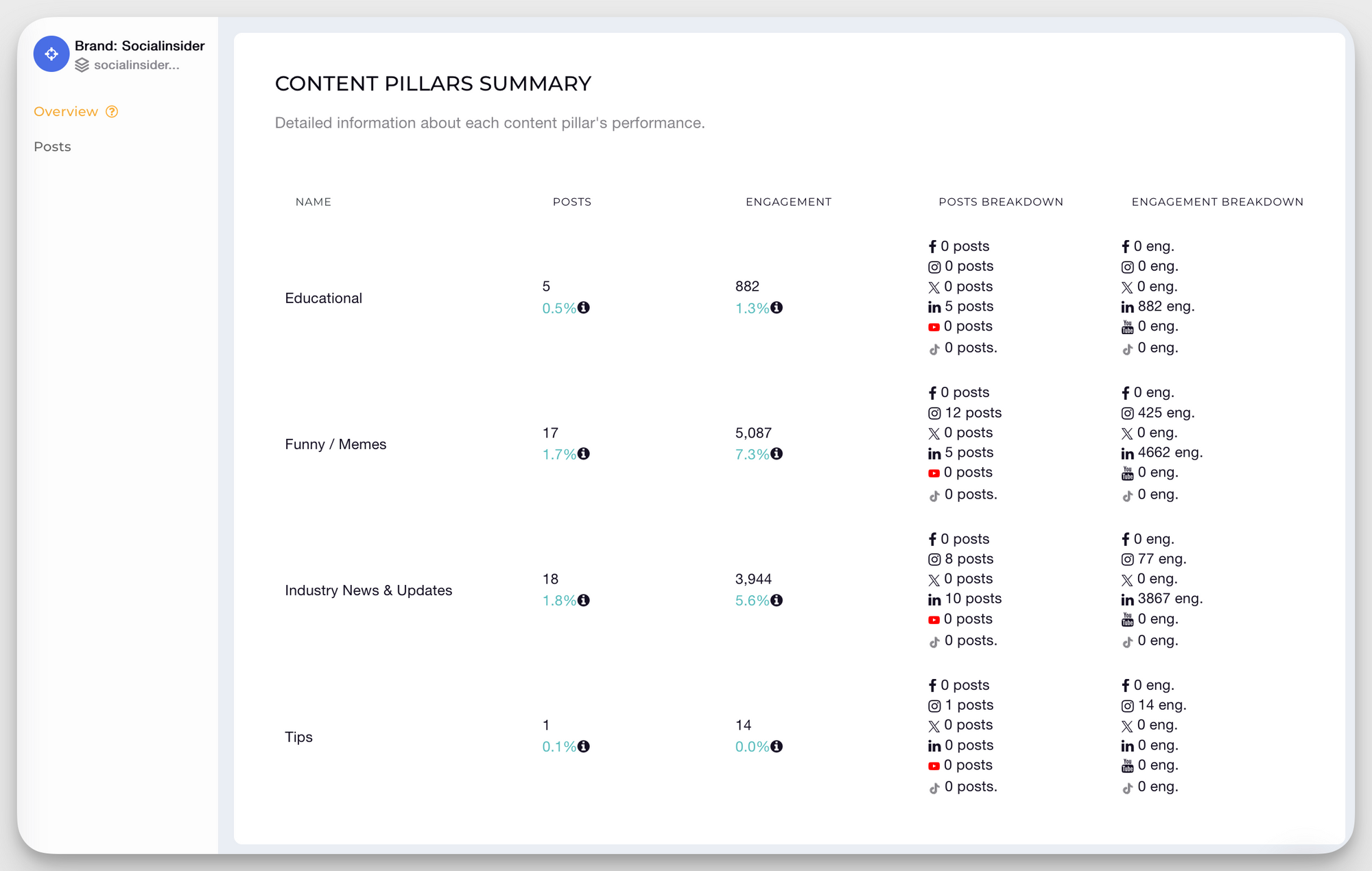
Influencer research
Studying influencer content, engagement rates, and audience reactions can provide insight into brand perception and buying behavior. It also helps assess fit for future partnerships. This is especially relevant in campaigns where authenticity and community trust drive results.
Hashtag analysis
Tracking trending and branded hashtags helps identify what themes or movements are gaining traction. It also reveals how users categorize and discuss your industry or product, supporting campaign planning, competitor analysis, and audience profiling (remember the Chick-fil-A example?).
Each method contributes to a broader understanding of consumer behavior in the digital space. Together, they answer the key question: how does social media use market research? By turning real conversations into strategic insight—faster, cheaper, and often more honestly than traditional channels.
Socialinsider for social media market research
When conducting multi-platform social media market research, using the right analytics tool can dramatically improve both speed and depth of insight. Socialinsider is purpose-built for this—helping brands and agencies compare performance and make smarter decisions based on real data.
Here’s what makes Socialinsider stand out in the crowded field of social analytics tools:
- Competitive benchmarking: Easily compare your performance with direct competitors or industry benchmarks. Get a clear view of where you stand— by content type, engagement rate, posting frequency, and more.
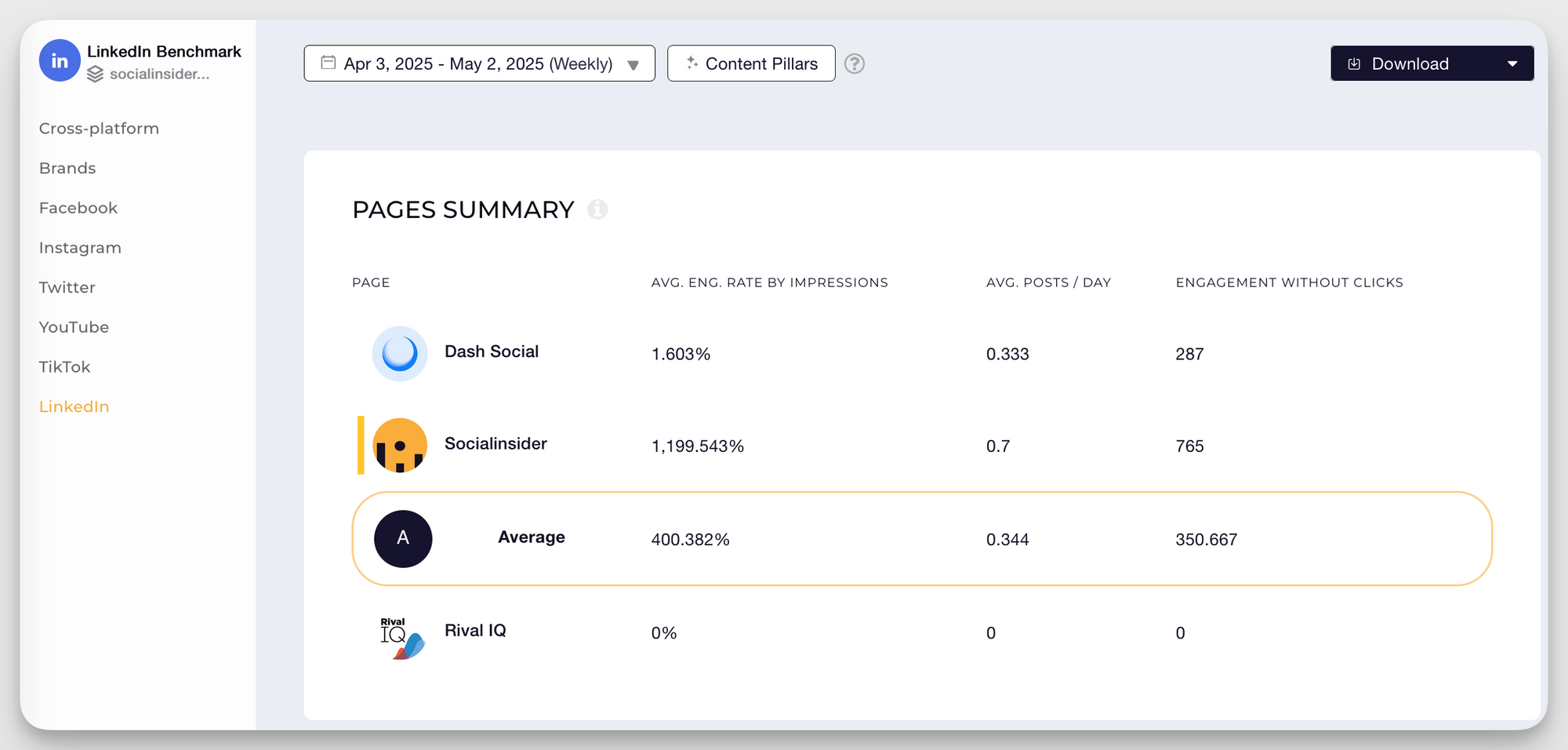
- Historical data access: View social performance trends over time with access to historical data that goes back 12 months or more. This helps you identify seasonal patterns, long-term shifts, or the impact of specific campaigns.
You can also explore how follower trends evolve over time following this detailed Instagram follower history analysis framework.
- Cross-platform analytics: Track performance across Facebook, Instagram, X (formerly Twitter), TikTok, YouTube, and LinkedIn—all in one place. No need to toggle between native dashboards. This cross-platform view helps you identify which channels offer the best market potential and refine their channel-specific strategies accordingly.
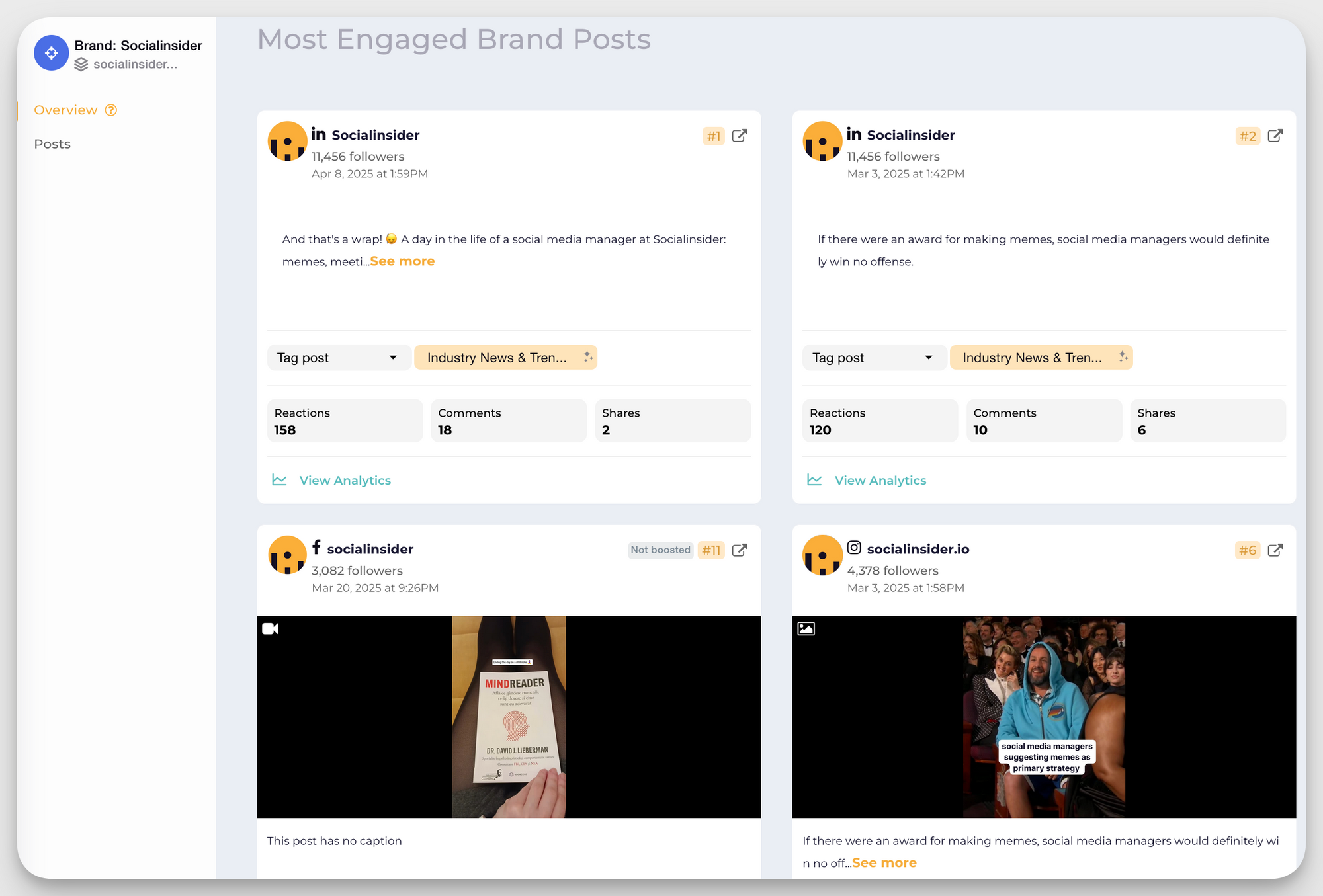
- Customizable reporting: Turn raw data into presentation-ready reports tailored to your KPIs. Whether it’s for internal strategy reviews or client-facing updates, reports can be easily branded and exported in PDF, XLS, or CSV format.
- Automated content performance analysis: Identify what types of content (videos, carousels, stories, etc.) consistently drive engagement. This helps inform future content plans and creative direction.
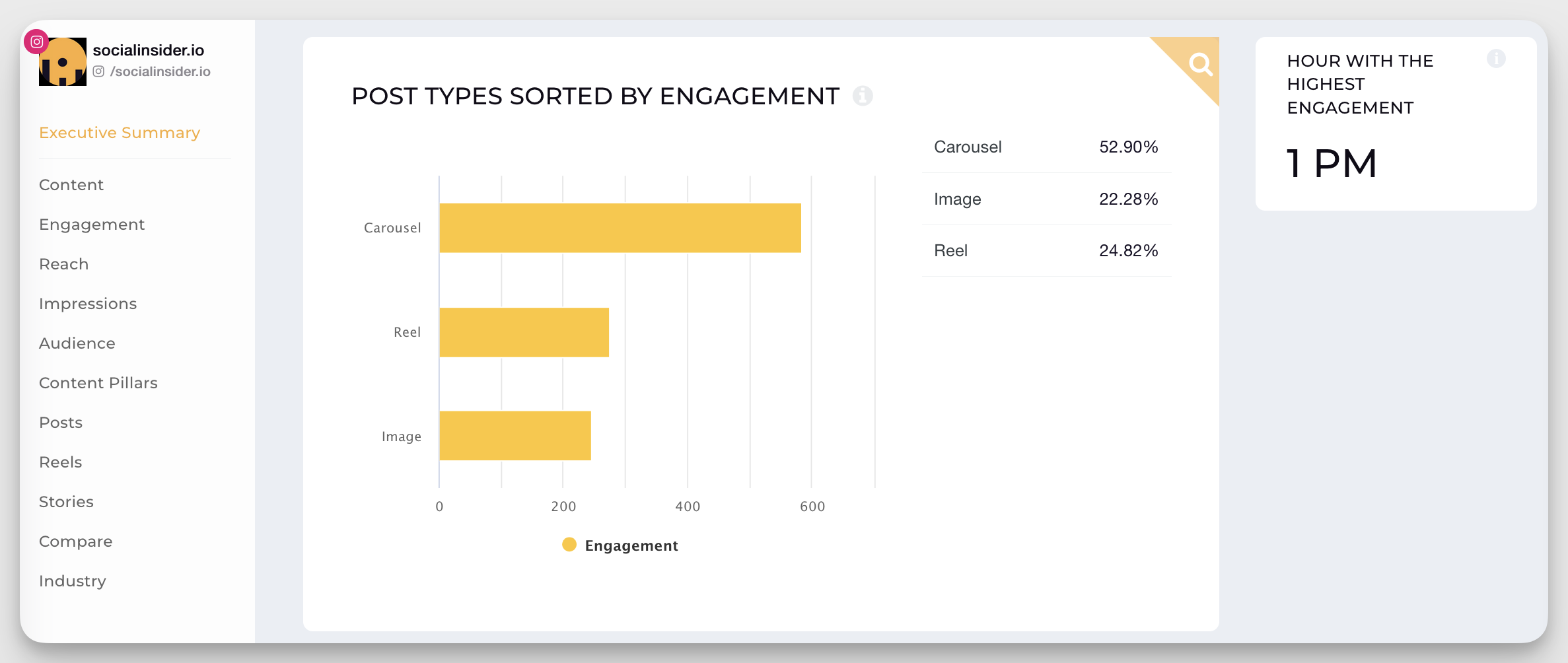
Together, these features go far beyond surface-level metrics. Socialinsider empowers marketers to dig deeper, offering market research on social media that’s insight-rich, platform-specific, and strategy-ready.
If you’re asking what the benefit of using social media for market research is, tools like Socialinsider are part of the answer: better insights, sharper benchmarks, and data you can actually act on.
Step-by-step social media market research strategy
Running successful market research on social media starts with a clear, repeatable process. This framework helps ensure your insights are actionable and aligned with business goals, not just a collection of disconnected metrics.
1. Setting clear research objectives
Before diving into data, define what you want to learn. Are you looking for competitive insights, audience sentiment, content performance, or campaign validation? A focused goal sets the direction for every step that follows.
2. Identifying target audiences
Use demographic, psychographic, and behavioral data to define your ideal customer segments. Social media analytics tools can help uncover patterns in follower location, interests, job titles, or content preferences, enabling more accurate targeting and better persona development.
3. Selecting appropriate platforms
Not every platform will align with your research or content goals. LinkedIn is great for B2B insights, while TikTok offers more cultural and trend-based signals. But it’s not just about where your audience is— it’s also about what format works best for your content.
For instance, if you’re sharing short-form videos, test whether they perform better as Reels, YouTube Shorts, or TikTok videos. Even if your audience exists on all three, performance and engagement can vary widely based on platform norms and algorithm preferences. Choose platforms where your audience is active and your content thrives.
4. Collecting relevant data
When collecting social media data for research purposes, organization is key. Socialinsider’s customizable dashboards allow you to centralize data collection across platforms, ensuring you capture all relevant conversations, engagement metrics, and competitor movements. Its automated tagging system, along with custom tags you can add, helps categorize this information based on your research objectives, building a structured dataset for analysis.
5. Analyzing and interpreting findings
Go beyond basic metrics. Use filters, tags, and platform-specific insights to identify patterns in engagement, sentiment, influencer impact, or content types. This step is where raw data turns into true competitive insights.
Social media analytics tools like Socialinsider simplify this phase by surfacing statistically significant shifts in performance and automatically tagging posts, giving teams a clearer sense of what’s working.
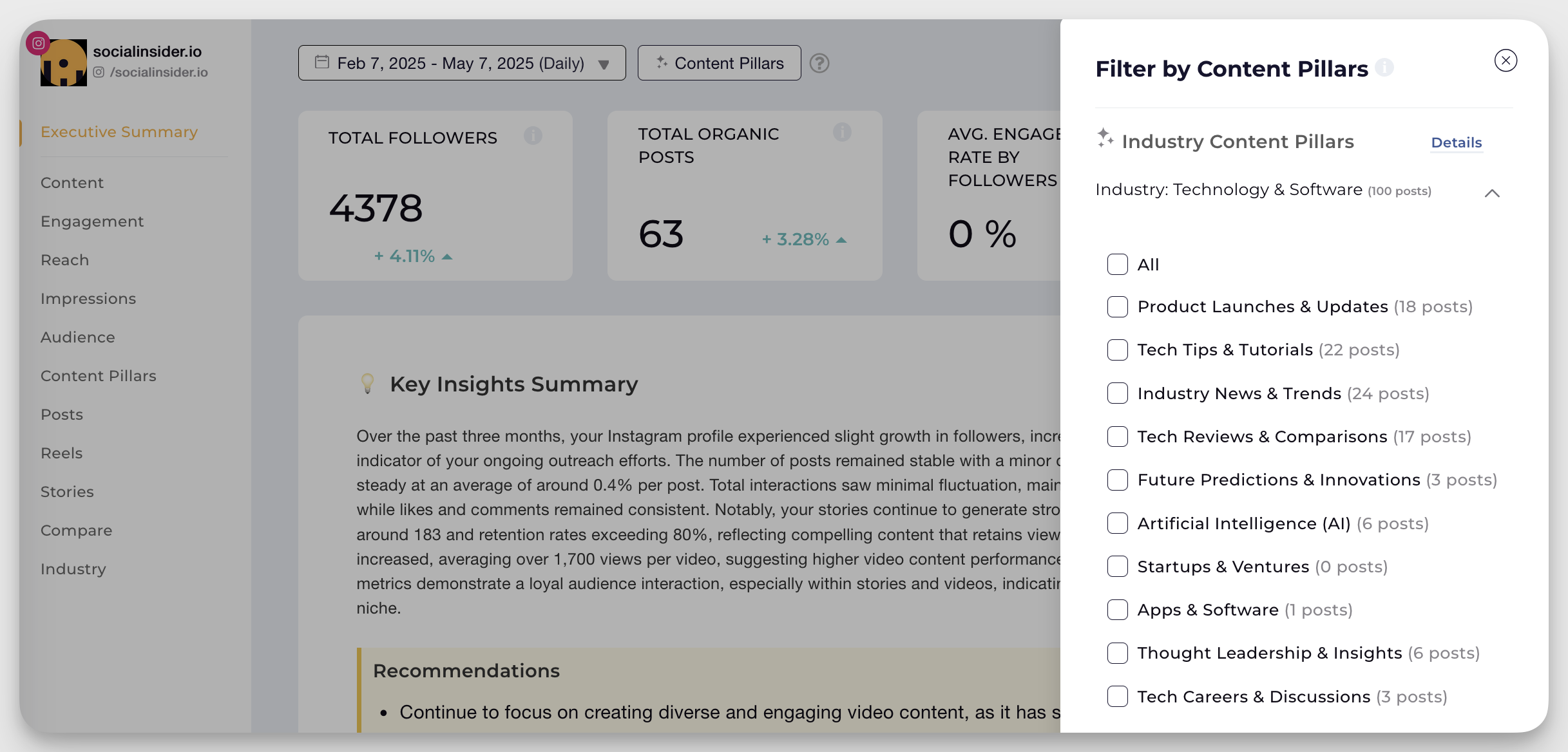

6. Implementing insights into business decisions
Feed your findings into key decisions— whether that’s refining your content calendar, adjusting messaging, identifying influencer partnerships, or even reshaping product features (following Spotify’s Wrapped example). The goal of research isn’t just to report, but to drive real business value.
7. Measuring the ROI of research efforts
Track how insights impact performance over time. Did your adjusted content strategy improve engagement? Did competitor monitoring lead to a faster response? Use KPIs like reach, conversion, campaign lift, or sentiment shifts to evaluate the effectiveness of your social media strategy powered by research.
A well-structured process, paired with powerful tools like Socialinsider, ensures your social media analytics tools do more than report— they empower. They help transform fragmented data into strategy-aligned, insight-led action.
Latest trends in social media market research
The way brands conduct market research has evolved rapidly with advancements in technology and changes in consumer behavior. These trends are shaping how companies approach social media and market research, helping them stay ahead of both audience expectations and competitor moves.
AI-driven research techniques
AI tools now power sentiment analysis, conversation clustering, image recognition, and even automatic audience segmentation. These capabilities allow brands to sift through massive volumes of social data quickly and extract patterns humans might miss.
Why it matters: As the volume of social data grows, AI helps make social media listening for market research scalable, efficient, and deeply insightful, turning unstructured conversations into structured, actionable findings.
Voice and visual search impact
With the rise of voice assistants and visual search tools (like Pinterest Lens or TikTok’s camera search), brands must now monitor non-text-based queries and responses. These trends affect how consumers discover products and content.
Why it matters: If you’re wondering how to use social media for market research in 2025 and beyond, it’s essential to move beyond text. Voice and visual inputs offer new data points about how people search, engage, and make decisions, especially for e-commerce and lifestyle brands.
Emerging platforms and their research potential
Platforms like Threads, Lemon8, and BeReal may not yet have the scale of Instagram or X (formerly Twitter), but they offer early signals about niche communities and cultural shifts. Early adopters often set trends that later influence mainstream behavior.
Why it matters: Keeping an eye on emerging spaces gives brands a competitive edge. For researchers, it’s a chance to explore unfiltered opinions, experiment with new formats, and refine their social media market research tools strategy while competitors are still catching up.
Privacy considerations and ethical research
As data privacy regulations evolve (e.g., GDPR, CCPA), ethical data collection is more critical than ever. Users expect transparency in how their data is used—even on public platforms.
Why it matters: Knowing how social media uses market research responsibly protects your brand’s trust and reputation. Ethical practices ensure you’re gathering insights legally and respectfully while still making the most of public data.
Predictive analytics in social media research
Predictive tools use historical and real-time social data to forecast future trends, customer behavior, or campaign outcomes. This goes beyond traditional analytics by offering forward-looking insights.
Why it matters: Predictive models help teams get proactive, not just reactive. Integrating social media market research tools with predictive engines enables marketers to anticipate changes and plan smarter strategies.
Common challenges and how to overcome them
While social media market research offers rich insights, it also comes with its own set of challenges. Here’s how to address some of the most common hurdles without compromising on research quality or outcomes.
Data overload and analysis paralysis
Social platforms generate massive amounts of content every second. Without structure, this leads to noise and overwhelm.
How to overcome it: Socialinsider tackles this with intelligent filtering options, helping marketers zero in on what matters. Its automated insights surface statistically significant trends and anomalies, removing guesswork and guiding teams to strategic takeaways.
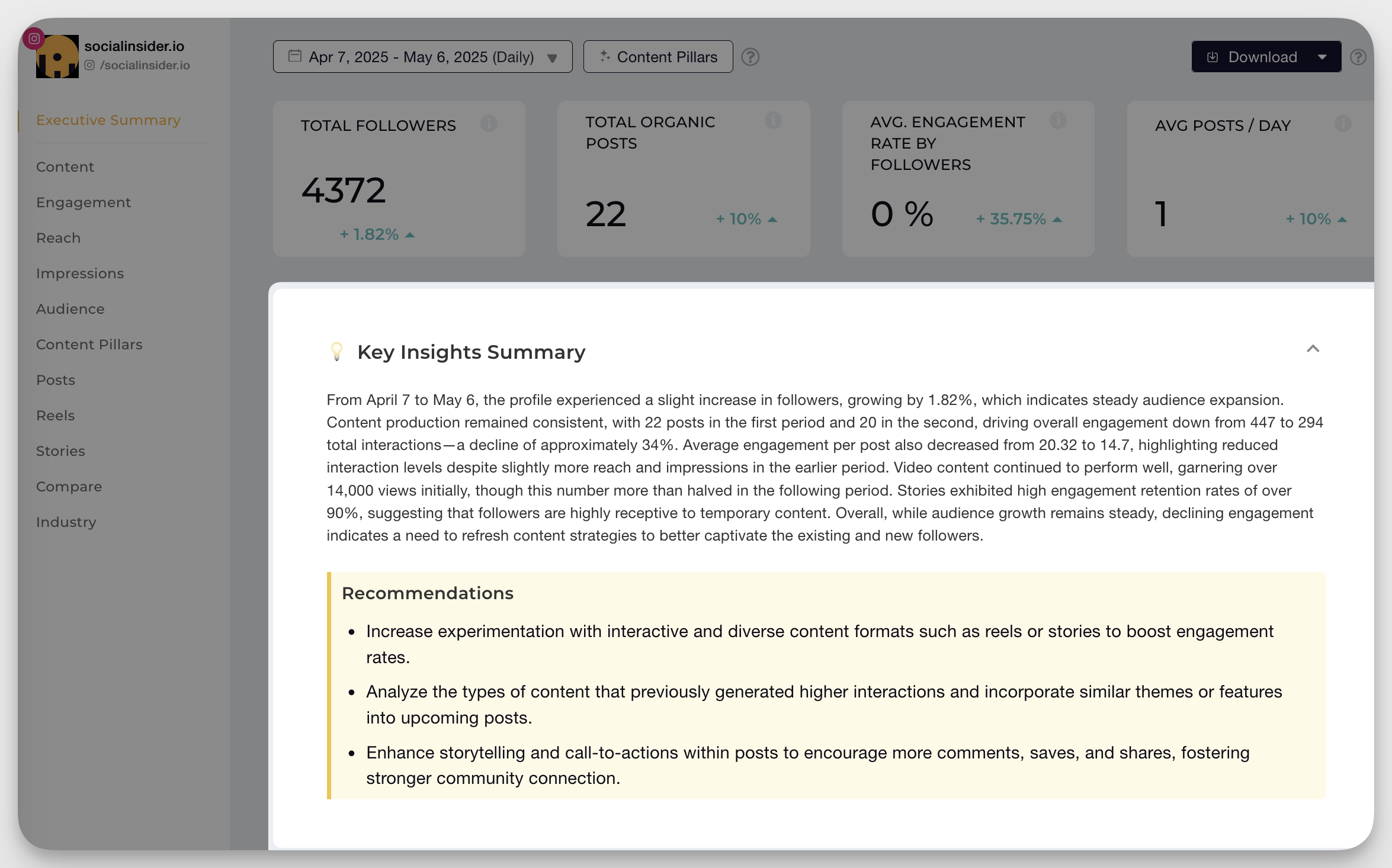
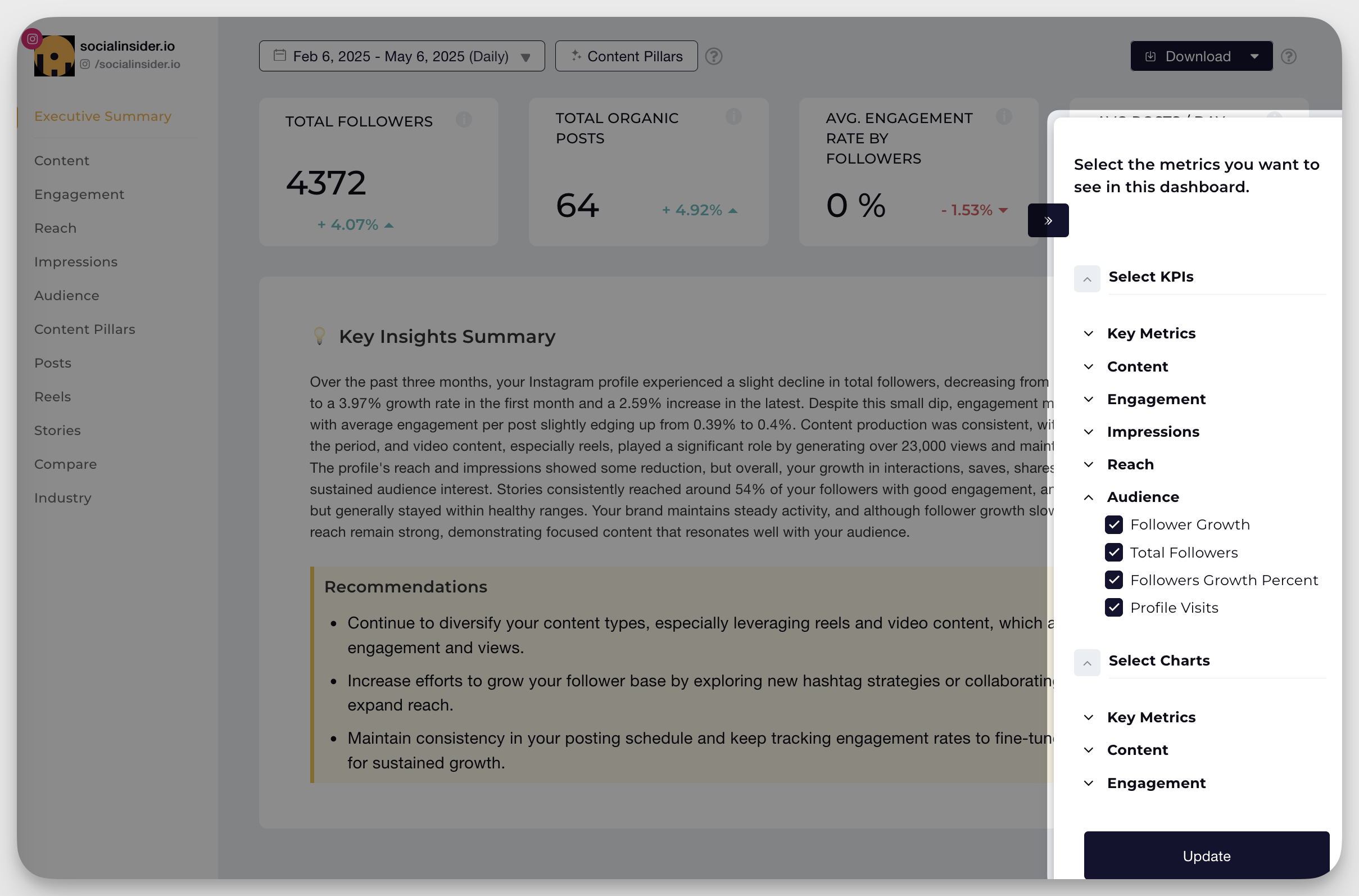
Maintaining research quality and reliability
Not all social data is accurate, complete, or unbiased. Sampling errors, bots, and skewed engagement can distort findings.
How to overcome it: Use a blend of qualitative and quantitative methods. Validate insights across multiple platforms, and use tools like Socialinsider that allow customizable tagging and segmentation, ensuring data is relevant and high quality.
Privacy concerns and compliance
As privacy laws like GDPR and CCPA evolve, collecting and using user data, especially from public conversations, requires caution.
How to overcome it: Stick to aggregate, anonymized data. Use social media market research tools that comply with platform terms and regulations. Clearly define internal policies to avoid overstepping ethical boundaries.
Platform algorithm changes
Social media algorithms constantly evolve, affecting what content is visible and what data is accessible.
How to overcome it: Stay updated with platform announcements and adjust your research approach accordingly. Tools like Socialinsider adapt quickly to API and algorithm changes, helping maintain consistency in long-term tracking and reporting.
Resource limitations
Small teams may struggle to manage multi-platform research or run frequent audits.
How to overcome it: Focus on the platforms and metrics most aligned with your objectives. Start with automated dashboards and templates from tools like Socialinsider to streamline workflows and reduce manual effort.
Future of social media market research
Over the next 3–5 years, social media market research will shift toward real-time, predictive, and platform-specific insights powered by AI. Tools will become faster at detecting sentiment changes and spotting emerging trends, even across private or decentralized platforms.
The use of social media as market research will expand beyond marketing, influencing functions like product development and customer service. But with more content and noise than ever, researchers will need to sharpen their ability to distinguish genuine insights from fleeting hype or algorithm-driven distortions.
Emerging technologies like generative AI, AR, and voice search will reshape how data is collected, analyzed, and applied. To stay ahead, businesses must invest in adaptable, ethical tools and treat social media monitoring as a core strategic function.
As platforms evolve and user behavior shifts, it’s equally important to recognize the limitations—biases in data, incomplete visibility, and the challenge of overreliance. Future-ready teams will balance automated insights with human judgment, combining social signals with broader research inputs to make smarter, more responsible decisions.
Final thoughts
Social media is no longer just a communication channel— it’s a dynamic, data-rich resource for market research. From real-time sentiment tracking to competitor analysis and audience profiling, the right tools and frameworks can turn raw social signals into strategic insight. To stay competitive, start embedding social media research into your core decision-making. Need a place to begin? Explore tools like Socialinsider or dive deeper into audience analysis, content trends, and campaign benchmarking with our recommended resources.
FAQs about social media market research
1. What is social media market research?
It’s the process of gathering and analyzing data from social platforms to understand audience behavior, brand perception, industry trends, and competitor activity. It turns online conversations and engagement metrics into actionable business insights.
2. What are the 4 C’s of social media marketing?
Content, Conversation, Community, and Connection. These pillars help guide how brands create, engage, and build relationships on social media.
3. What are the 5 P’s of social media marketing?
People, Plan, Platform, Publish, Promote. This framework outlines a strategic approach—from understanding your audience to distributing and amplifying content.
4. What is the 50/30/20 rule for social media?
A content strategy guideline: 50% educational or helpful content, 30% inspirational or engaging content, and 20% promotional content. It helps maintain balance and keeps audiences interested.
5. How often should I conduct social media market research?
Ideally, on an ongoing basis. Regular monitoring helps you catch shifts in audience sentiment, trending topics, or competitor moves. At a minimum, review insights monthly or quarterly.
6. How do I measure the ROI of social media market research?
Track outcomes like increased engagement, improved content performance, better campaign results, faster response to market shifts, and overall brand growth. Use tools that tie insights to business KPIs.
7. Which social media platforms are best for market research?
It depends on your goals and audience. LinkedIn is ideal for B2B insights, Instagram and TikTok for consumer behavior, X (Twitter) for real-time sentiment, and YouTube for content engagement trends.
8. Can small businesses effectively conduct social media market research?
Absolutely. With third-party social media analytics tools like Socialinsider and built-in platform analytics, even small teams can gather valuable insights without a large budget. Start small—focus on your key channels and top-performing content.







